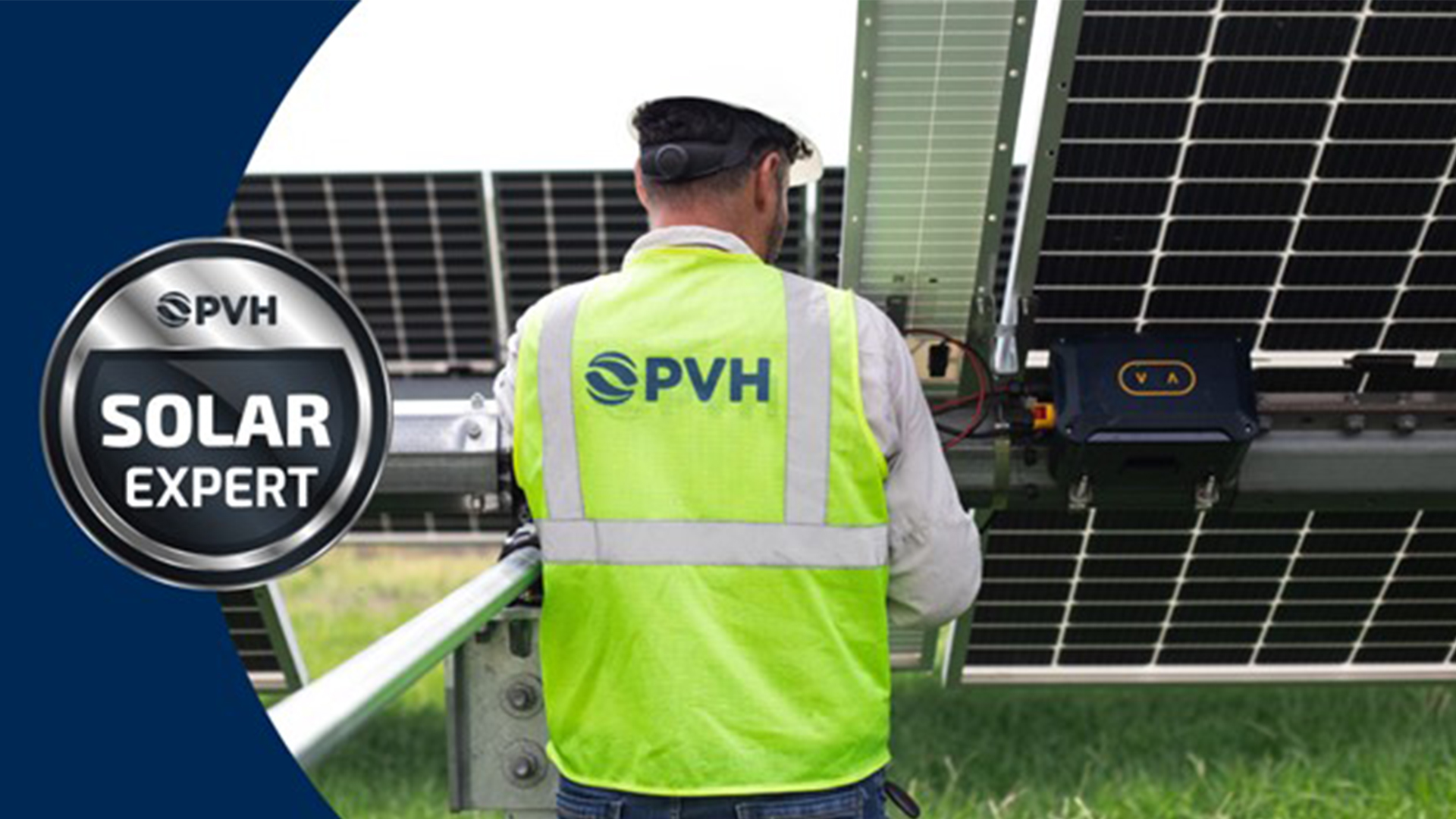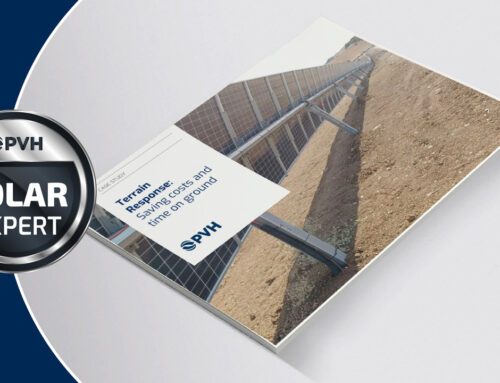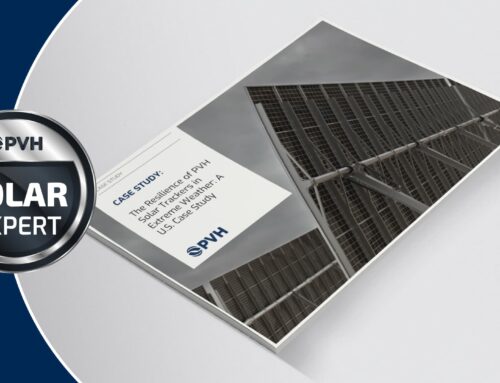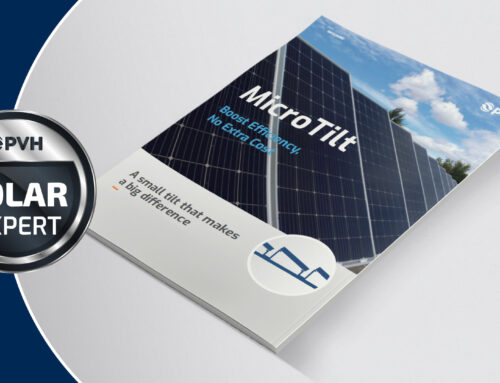Challenges in Large-Scale Solar Projects: Bird’s Eye View from PVH’s Design Engineers
29/07/2024

PV Hardware (PVH) is the one of the leading manufacturers of solar trackers in Australia, offering cutting-edge technology and solutions tailored to meet the specific needs of the Australian Solar Projects and with an outstanding track record of 2.2 GW already supplied in the region. We have a strong focus on local content and best-in-class latest tracker technology, PVH ensures high-quality, reliable, and efficient solar tracking systems that cater to the diverse requirements of large-scale solar projects across the region.
Today we have a look through the eyes of our new Design Engineer, Hung Pham, and hear from him about the challenges faced by the design team for delivering the best solutions which involves a series of iterative stages in the design process: preliminary design, structural calculations, foundation design, and final outcomes. We gather essential information from clients such as developed boundaries, exclusion zones, geotechnical surveys, and topography data. Working closely with our in-house teams, we continually propose optimized solutions to ensure the successful delivery of the projects. We remain available to assist clients with updates and revisions to layouts and structures throughout the design phase.
We consistently meet unique challenges with each project from clients. Every project presents distinct criteria and requirements. For instance, projects found in high wind regions demand tighter engineering precision to ensure structural capability aligns with the terrain. In certain scenarios, we offer clients various tracker structure options to offer a comprehensive view of their choices. Our priority is always to use our resources effectively to promptly deliver the best possible quotations to clients.
Let us dive into an example for these challenges and how we solve them.
Technical Challenges and Solutions
- Preliminary Design and Layouts
- Task: Create optimal layouts considering site-specific criteria.
- Tools Used: CAD software for layouts, PVH System tools for yield simulations.
- Challenge: Adjusting designs to fit within developed boundaries and exclusion zones, but still maintain the targeted capacity.
- Solution: Detailed site analysis and flexible design iterations.
- Structural Calculations
- Task: Ensure tracker structures meet all engineering standards.
- Tools Used: Structural analysis software.
- Challenge: Meeting stringent requirements in high wind regions.
- Solution: Tighter engineering precision and multiple structure options.
- Foundation Design
- Task: Develop stable foundations based on geotechnical surveys.
- Tools Used: Geotechnical analysis tools.
- Challenge: Adapting designs to varying soil conditions.
- Solution: Customized foundation designs for different soil types.
- Final Design and Client Revisions
- Task: Provide final designs and accommodate client revisions.
- Tools Used: Design software and client feedback loops.
- Challenge: Managing multiple revisions and supporting project timelines.
- Solution: Close collaboration with clients and efficient revision processes.
Australia’s Coastal Region Challenges for Solar Farms- PVH’s TFT Tracker milestones.
This example focuses on a Solar Farm exceeding 300MWdc in Australia. Covering 388 hectares, the project held challenging conditions during the design phase due to its location amidst hilly terrain and extensive vegetation. These factors needed a careful design to adapt with high slopes and flooding risks condition while supporting the targeted capacity. We proposed to the client a robust layout that accommodated environmental constraints effectively.
Hung Pham, Design Engineer-APAC talks in depth about this particular challenge – “We recommended the use of Terrain Following Trackers (TFT), an innovative technology designed to maximize solar energy generation even on challenging regions of Australia. The Terrain Following Trackers offer several advantages, including significant reductions in cut and fill volumes, which result in lower costs and minimized project risks. They are particularly beneficial for solar projects situated on sloped, uneven terrain, helping to mitigate environmental impacts effectively.
With the flexibility to combine configuration of 1, 2, and 3 strings, these integrated Infinity Terrain Following Tracker will be designed to operate efficiently within a slope limitation of up to 15% in the North-South direction. Moreover, they can accommodate maximum allowed angles between sections of up to 1°, which allows for precise alignment with the terrain contours.
To refine the design and performance of these Terrain Following Trackers, we used the specific tool to simulate the structures, ensuring that our simulations closely follow design conditions. This approach enabled us to deliver a robust and efficient solar energy solution tailored to the unique challenges of the Coastal regions in Australia.”

Cross-section for Non – Terrain Following Tracker

Cross-section for Terrain Following Tracker

Non -Terrain Following Trackers

Terrain Following Trackers
In our preliminary proposal for that project in Australia Coastal region, implementing Terrain Following Trackers (TFTs) yielded substantial benefits. Specifically, the simulated TFT proposal enabled us to reduce more than 80% of the cut volume and 55% of the fill volume compared to the first proposal design of client. This significant reduction not only refined the first capital expenditure (CAPEX) for our client but also has the potential to enhance the project’s revenue over its operational lifespan.
Minimizing earthworks through TFT design is an excellent approach which effectively lowered construction costs and mitigated project risks associated with managing challenging terrain.
Gonzalo Andres Diaz, Project Design Manager, APAC adds to this, “Terrain Following Trackers are highly adaptable to each project, we at PVH want to maximize the efficiency of Solar Trackers and give the best design features of our product to all our clients. TFT will be the best solution adapted to unique geological conditions of Australia. I am excited to highlight our best design features for all our clients.”
During the preliminary design phase, we diligently utilize our available resources to prepare the layout thoroughly. Furthermore, we encourage clients to review the earthwork volume and discuss it collaboratively. Through this approach, we consistently demonstrate our capability and commitment to collaborate with clients to ensure successful project delivery. When involved in the detailed design phase, we conduct thorough analyses of structures, foundations, and earthworks to mitigate risks throughout construction and operation.
Hung continues to say: “I’m eager to tackle challenges within the Design Department of PVH, collaborating with the help of my colleagues and managers, I can gain valuable experience from each project and enhance my skills further.”
Written in collaboration with our new Team Member – Hung Pham – Master’s Civil Engineer Specialized in Renewable Energy – Australia – PVH











